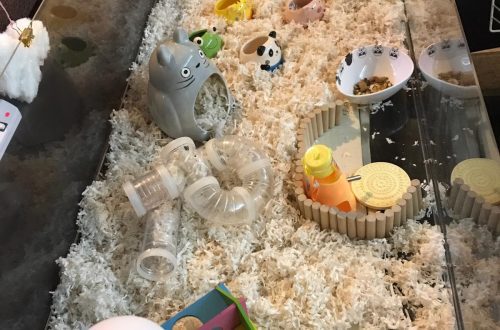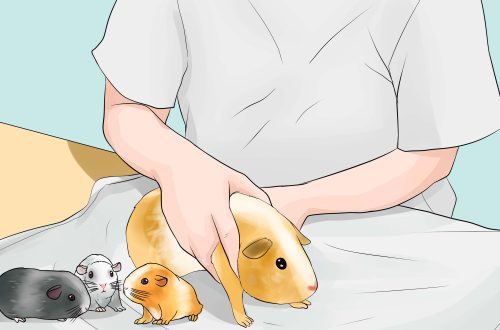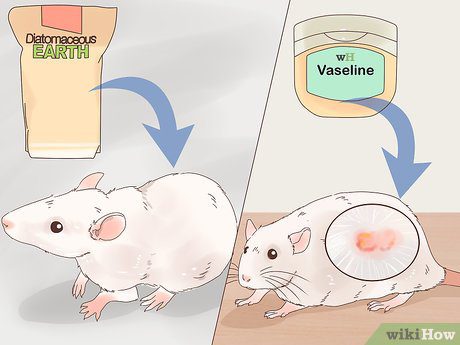
Parasites in rats: fleas, withers, lice and ticks – treatment and prevention
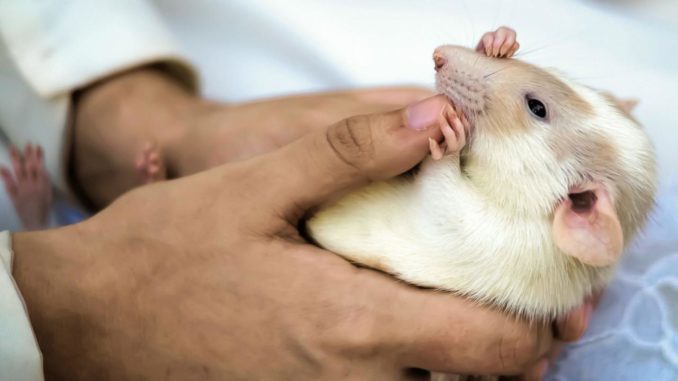
Decorative rats are neat animals, which the owners provide decent living conditions. Unfortunately, parasites in rats are found even with a comfortable content in the apartment, timely cleaning and regular disinfection of the rodent cage.
If your pet rat has become restless, often itches and bites hair with its teeth, scratches, bloody crusts, bald patches appear on the body, then you should suspect that your furry friend has external or subcutaneous parasites. In such cases, it is advisable to immediately deliver the pet to a veterinary clinic to clarify the diagnosis and prescribe effective treatment, otherwise rat parasites can cause exhaustion and death of the animal.
Contents
Where do parasites come from decorative rats
A similar question is often asked by inexperienced rat breeders when parasitic living creatures are found on the body of an adored pet. A domestic rodent can pick up parasites even with very careful care and maintenance, I can be their sources.
Filler
Often, lice and ticks live in hay and sawdust, which animal owners buy from dubious places and use as filler.
Contact with infected animals
They can be domestic or wild mice and rats.
External environment
Even a loving owner can reward a pet with parasites, bringing an infection from the street on his hands and clothes.
Major rat parasites
In decorative rats, you can find different types of ectoparasites, all of them deliver unbearable itching and anxiety to the animal.
Vlas-eaters
Red wingless small insects no larger than 1 mm in size with an elongated elongated body covered with bristles, shaped like cat fleas. In light-colored rodents, adult insects can be easily detected in the coat. Rat pests feed on particles of the epidermis and the blood of a rodent.
Infection of domestic rats with lice is accompanied by severe debilitating itching in the rodent, the domestic rat becomes very restless, twitchy, often itches intensely, refuses to eat, progressive exhaustion is observed. On the body of the pet there are numerous wounds, scratches, bruises, accompanied by severe swelling and inflammation.
Withers in rats multiply rapidly, the adult female lays more than a hundred nit eggs, which stick to the animal’s fur. The owner can detect light, shiny blotches down the back and near the tail, fixed in the pet’s hairline and resembling ordinary dandruff. It is almost impossible to remove nits from a rat’s hair, only with the complete removal of the animal’s hair. A huge number of larvae emerge from the eggs, which within a month become adult sexually mature individuals.
Parasitization of lice in rats is dangerous for the death of a pet, so treatment should be started at the first characteristic symptoms of infection.
Lice
Lice in rats cause severe itching and anxiety, these parasitic insects feed only on the blood of a domestic rat, one louse sticks more than 10 times to the skin of an animal per day. Adults can only be examined under a microscope; the size of the body of parasites is not more than 0,5 mm.
Rat lice are small red insects with an elongated body, at the head end of which there are hooks for holding on the body of the animal and two sharp stylets for piercing the skin. The louse cuts through the skin, injects substances that prevent the rodent from clotting, and sticks to the body of the animal.
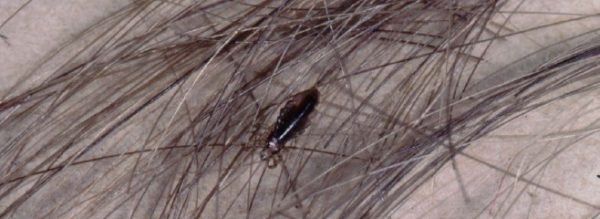
Reproduction of lice occurs in the same way as in withers, with the deposition of nit eggs and the hatching of nymphs, which turn into sexually mature individuals. White shiny nits of lice can be found on the rat’s hair, parasitism is accompanied by severe nervousness of the animal, active itching, lethargy and apathy of the pet, anemia, typhoid and hemobartonellosis may develop in the rat.
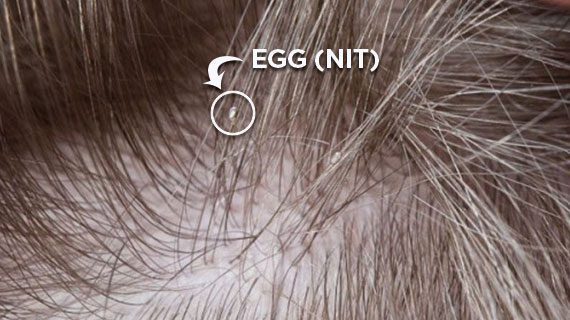
Fleas
Rat fleas are unpleasant red-brown blood-sucking insects with a characteristic flattened body on both sides, the size of the insect is 2-5 mm. The flea is able to jump long distances and cling to the host’s fur with tenacious claws, and is able to migrate between cats, dogs and rats.
When infected, pets constantly scratch itchy places, become restless, and anemia may develop. Dried burgundy crusts can be found on the body of the animal – flea secretions, when bathing a rat, they color the water pink.
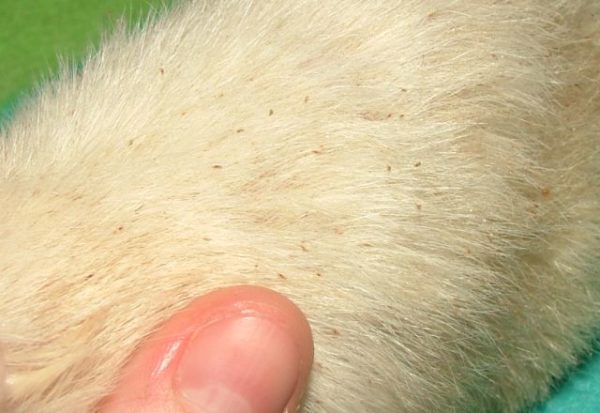
Ticks in rats are very common, there are several types of parasites that live on the skin and in the epidermis layer. The rat tick is red-brown in color, 0,1-1 mm in size, has an elongated flat body, feeds on the blood of an animal and suffers various serious diseases. With a lack of nutrition, the tick is able to attack a person.
IMPORTANT!!! The rat mite is dangerous to humans! People, especially children, have a hard time with eczematous dermatitis, which develops as a result of parasitism of these insects. Ticks infect people with typhus and murine typhus, tularemia, plague, rickettsiosis and Q fever.
Subcutaneous mites live in the upper layer of the epidermis under the skin of a rodent. It is impossible to visually detect these mites, the diagnosis is made only on the basis of a skin scraping examination under a microscope.
Parasitism of ticks on the body of a rat is manifested by characteristic symptoms: hair loss and the formation of multiple swollen red wounds on the neck, head, spine and shoulders of the rodent.
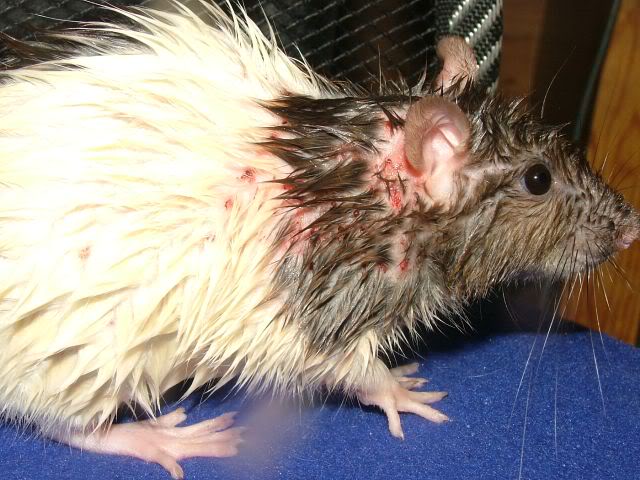
Ear mites primarily affect the delicate skin of the ear, pinna, and nose, manifesting as yellow or red growths on the ears, nose, limbs, and genitals.
Bedbugs
Ordinary bed bugs can also drink blood from ornamental rats, causing severe itching, scratching, anemia, and infection with blood parasites. Bedbugs attack domestic rodents during a period of food shortage or absence of a person nearby as a source of food.
Are rat parasites dangerous to humans?
With the exception of one species of rat mite, Ornithonyssus benoiti, all ornamental rat ectoparasites are not dangerous to humans, they cannot bite humans and live on the human body. The defeat of a domestic rodent by parasitic insects provokes allergic diseases in many people due to the strong toxicity to humans of their waste products. After treating the pet and cage with insecticides, allergic symptoms disappear.
Treatment of an infected rat
Clarification of the type of parasite and the appointment of treatment should be carried out by a specialist in a veterinary clinic, since different drugs are used to destroy external and subcutaneous parasites. In case of complications, the animal is prescribed anti-inflammatory ointments, immunostimulating drugs and a course of vitamins and antibiotics.
Insecticide preparations are highly toxic, if improperly processed or overdosed, there is a possibility of poisoning a decorative rat. It is desirable that the treatment of the animal be led by a veterinarian, it is also acceptable to treat a fluffy pet at home in a well-ventilated area, with strict adherence to the recommendations of a specialist.
Simultaneously with the treatment of the pet, it is necessary to throw away the bedding, disinfect the cage and all accessories several times, change the filler, treat the entire room with repellents. It is advisable to throw away all wooden objects from the cage, they can be places where parasites accumulate. The claws of the rodent should be kept short during the treatment period to prevent scratching of the skin.
When group keeping domestic rats, it is necessary to repeatedly process all individuals in order to avoid re-infection. If a pet is bitten by fleas or bedbugs, insecticide treatment is recommended for all pets living in the house, as well as for the room itself: carpets, upholstered furniture, mattresses, floors, etc.
Prevention of infection of ornamental rats with parasites
To prevent infection of your beloved pets with ectoparasites, it is advisable to follow simple preventive measures:
- parasites infect animals with low immunity, so it is necessary to strengthen the health of a furry friend with a balanced diet using vitamin supplements and the necessary daily walking of a pet;
- it is desirable to purchase feed and fillers in specialized stores;
- regularly wash and disinfect the animal’s cage and walking areas;
- quarantine of newly acquired animals before placing them in the main cage;
- washing hands and changing street clothes before interacting with your pet rodent.
If scratching, restlessness and skin lesions are found in a rodent, it is necessary to rid the pet of these parasites as soon as possible; in advanced cases, the pet may die. Prevent the development of exhaustion and incurable complications, timely treatment of a domestic rodent and its home can cure your domestic rat without any consequences.
Fleas, lice and other parasites in domestic rats
4.3 (86.67%) 51 votes



